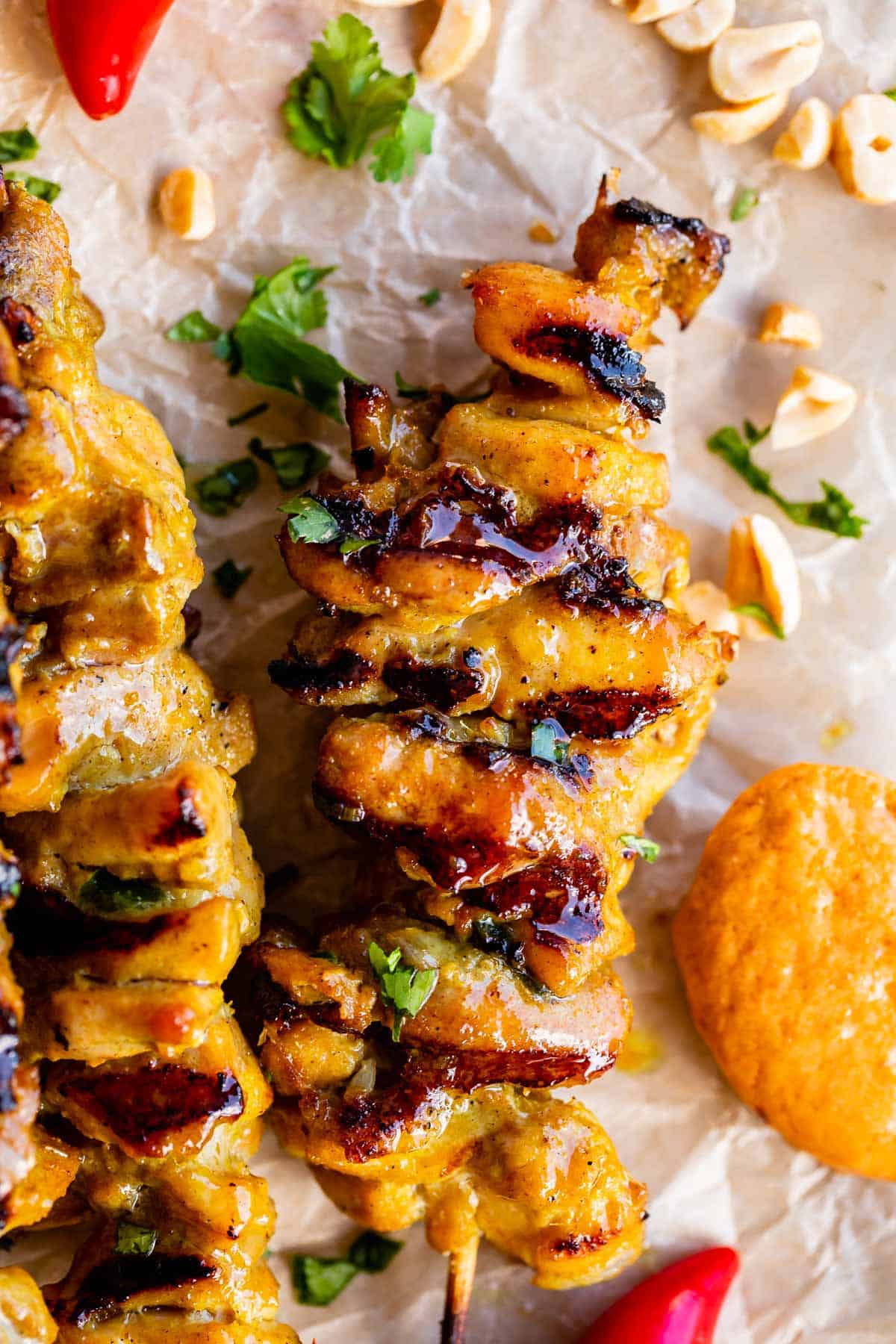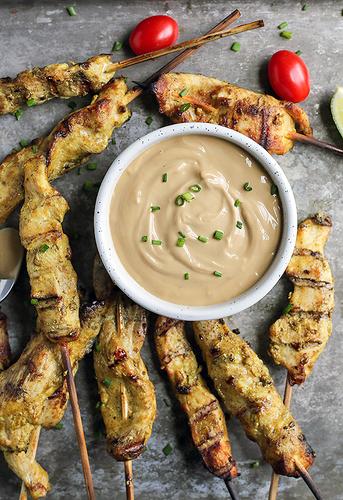Chicken Satay
Chicken Satay is a popular Southeast Asian dish that consists of marinated, skewered, and grilled chicken served with a savory peanut sauce. It's a delicious fusion of flavors characterized by its tender chicken pieces and a harmonious balance between savory, spicy, and slightly sweet notes.
This dish is perfect for those who love grilled meat with a twist. It's also easy to make at home, requiring only a handful of ingredients like chicken, soy sauce, honey, spices, and peanut butter for the sauce. It can be served as an appetizer or a main course with rice.
11%
CARBS
36%
FAT
53%
PROTEIN
Featured Articles
7 Chicken Satay Products
19 Recipes for Chicken Satay
3
Succulent Chicken Satay Skewers with Creamy Peanut Sauce
13
Paleo Whole30 Chicken Satay with Sunbutter Sauce
5
Chicken Satay
92
Chicken Satay with Creamy Peanut Sauce & Thai Cucumber Salad
11
Chicken Satay Rice Bowls
6
Thai Chicken Satay Skewers
42
Chicken Satay with Peanut Sauce
20
Chicken satay with peanut sauce
Chicken Satay FAQ
What is Chicken Satay?
What ingredients do I need to make Chicken Satay?
Can I use chicken breasts instead of chicken thighs?
What is the best way to cook Chicken Satay?
How can I prevent the chicken from sticking to the grill or pan?
Can I make Chicken Satay ahead of time?
How can I make the peanut dipping sauce?
What are some side dishes that go well with Chicken Satay?
Expiration & Storage Tips
When does Chicken Satay expire?
Unopened, pre-packaged chicken satay that's bought from the grocery can last until the date specified on the packaging. It may vary from brand to brand but this is typically up to 3 to 5 days. Once opened, it's advisable to consume within 3 days if kept in a refrigerator. If frozen, chicken satay can last up to 6 months. For homemade chicken satay, it's best to consume it within 3 days when refrigerated.
How do you tell if Chicken Satay is bad?
Chicken satay has gone bad if you observe change in color, this means the chicken could have turned gray or greenish. A strong, sour, or putrid smell is another surefire sign that it has expired. If you touch the chicken satay and it feels slimy, it's best to discard it. Do keep in mind, you can never be sure from visuals and smell alone, so if in doubt, throw it out.
Tips for storing Chicken Satay to extend shelf life
• Store in an airtight container to prevent exposure to air and moisture.
• Always refrigerate at a temperature below 40° F.
• Freeze homemade or leftover chicken satay in freezer-safe bags or foil.
• Don't refreeze chicken satay once defrosted for safety reasons.
• Use the 'first in, first out' rule to ensure you're always eating the oldest items in your fridge first.
Health Info
Macros
3g
CARBS
11g
FAT
16g
PROTEIN
Allowed on these diets
LOW FAT
HIGH CALCIUM
MEDITERRANEAN
LACTOSE FREE
GLUTEN FREE
Contains these allergens
PEANUTS
















